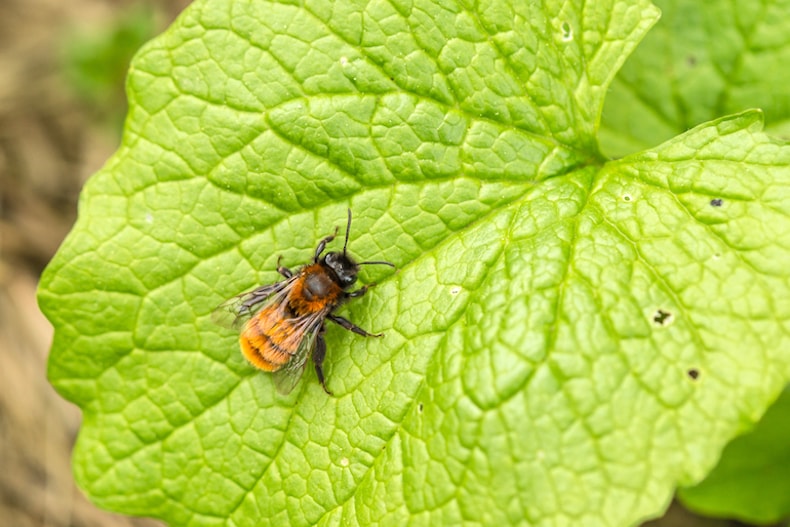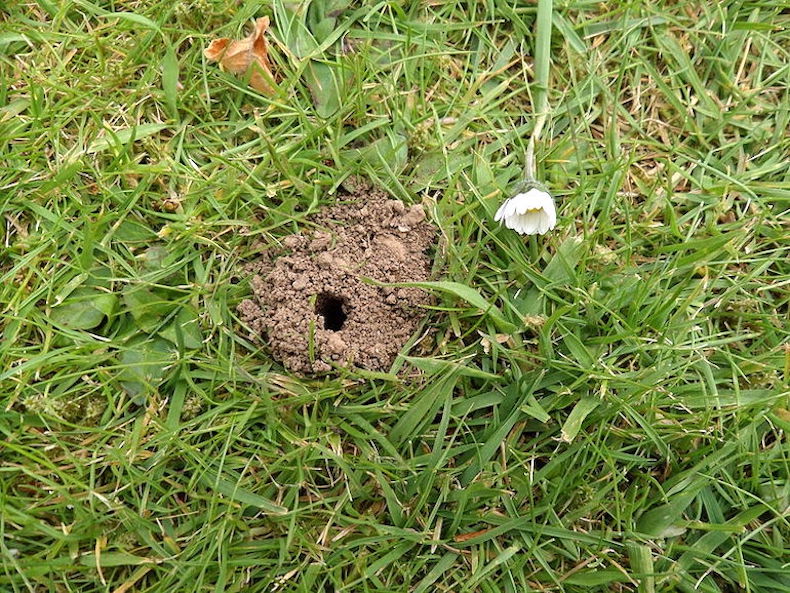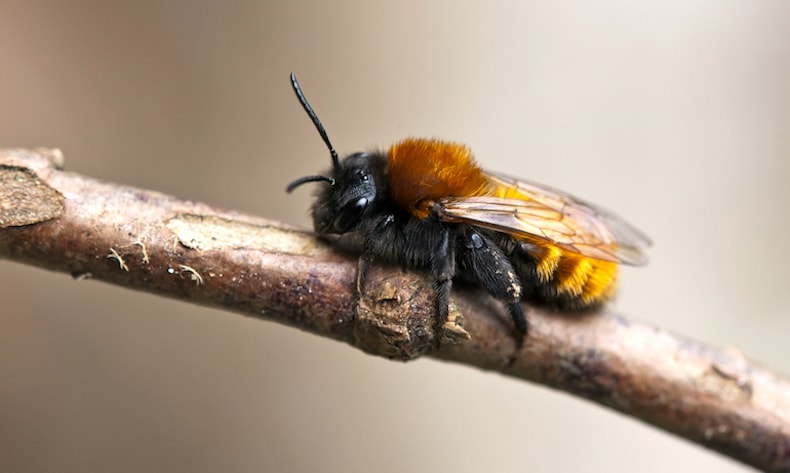Garden pests - Tawny mining bee

Tawny mining bees aren't major threats to garden plants
Image: Lioneska/Shutterstock
What are those tiny mounds of dirt in your lawn? If they’re too small to be the work of a mole or even an earthworm, chances are that some tawny mining bees have made your garden their home. Read on to learn more about this species of bee.
What are tawny mining bees?
Tawny mining bees are a species of solitary mining bee the size of a honeybee that are seen in the UK, particularly in England and Wales, in spring and summer. They have furry orange coats (although the males are slightly more brown in colour) and black faces.
They get their name from their habit of burrowing into areas of light soil or lawn, often south-facing, in order to nest.
How do I tell if I have tawny mining bees in my garden?

Female tawny bees create safe nests in the ground for their offspring
Image: Rosser1954, CC BY-SA 4.0, via Wikimedia Commons
The tell-tale sign that you have tawny mining bees in your garden is the teeny tiny mounds of dirt that appear on your lawn in early spring. Often mistaken for earthworm activity, these mounds are made by the female tawny mining bees burrowing into the ground. She does this to make a safe nest for her eggs, and later the baby bees, which will stay in the nest until they are ready to emerge the following year.
Tawny mining bees are solitary creatures, with each mound representing the nest of one bee. So even if you see multiple mounds, these are generally made by isolated creatures, rather than being an indication of any sort of hive.
What plants do tawny mining bees eat?

Tawny mining bees are useful pollinators in your garden
Image: Sue Robinson/Shutterstock
Tawny mining bees feed on the nectar and pollen from a range of flowers and shrubs, depending on the season. They will happily buzz around fruit trees, buttercups, hawthorn and more, but dandelions are a particular favourite.
How should I respond to tawny mining bees in my garden?
Like other species of bee, the tawny mining bee is a fantastic pollinator and will contribute much to the lushness and general health of your garden. With that in mind, it’s best to leave them... bee.
The small mounds they create may not be ideal, but they typically only last for a few days or weeks every year and do no lasting damage to lawns. Tawny mining bees are also not an aggressive species so they’re unlikely to sting or be a nuisance.
Other pages you might like
See all pests & diseases guides
Individual guides
Pests
Sign Up For Exclusive Special Offers




© 2025 Thompson & Morgan. All rights reserved. A division of Branded Garden Products Limited.



